
Latest blogs
All recent blogs from British Sugar
Guest blog: Get portion wise – how much should you be eating?
4 August 2022
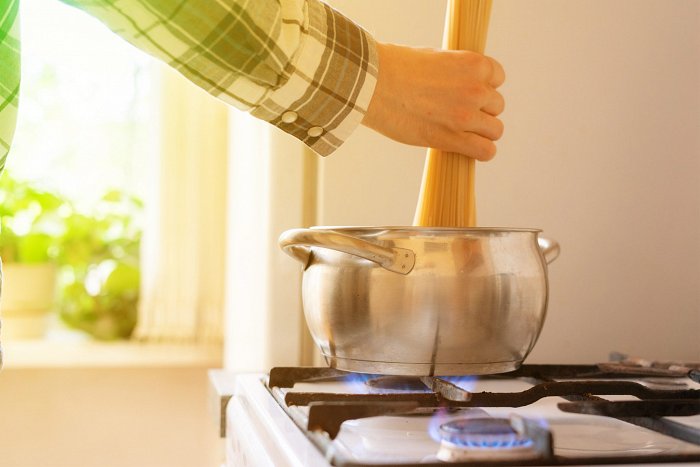
Written by Helena Gibson-Moore, Nutrition Scientist, British Nutrition Foundation
Do you ever think about portion sizes when you’re cooking at home? Well here at the British Nutrition Foundation we conducted a survey that revealed the majority of adults (80%) said they have portion sizes on their minds at least some of the time when preparing and serving meals. And, did you know research shows that serving bigger portions can encourage people to eat more and so can mean we have more calories than we need?[1]
So, if it’s on our minds but we’re not sure about the portion size we should be eating – how can we get it right?
I’m here to break it down for you, to help you find the right portion sizes for you, which can not only help you eat a healthy, balanced diet but also help you maintain a normal body weight. Don’t worry, it’s not about restricting what you eat – it’s about getting the right balance for you! So, let’s get portion wise!
What are the right portion sizes for me?
We’ve learnt that getting portion sizes right is an important part of eating a healthy, balanced diet but as everyone is different is there a one size fits all? Well, you may have heard of the Eatwell Guide, the UK’s healthy eating model, which shows us the types of different foods and drinks we should eat to have a healthy, balanced diet.
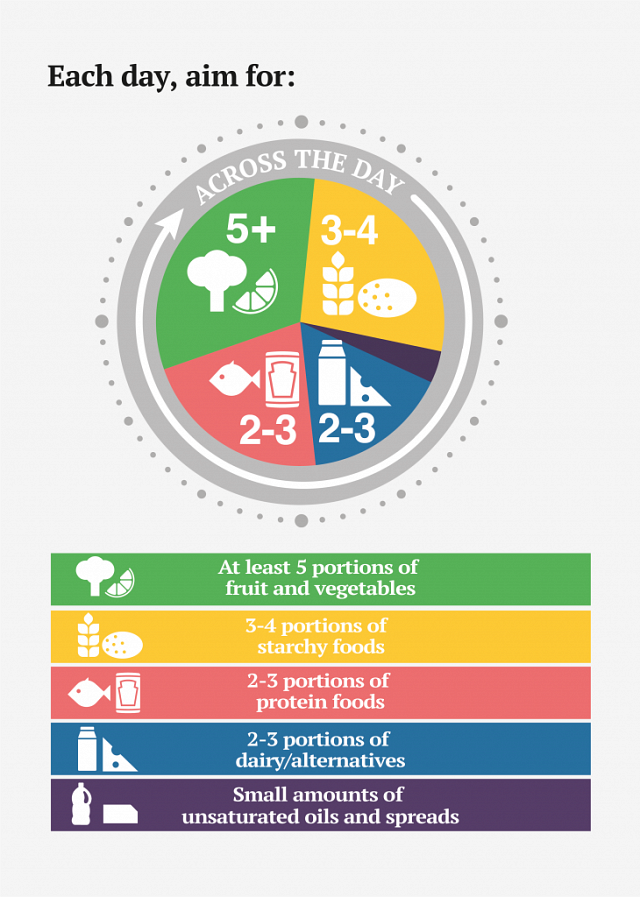
With this in mind, the British Nutrition Foundation’s guide to portion sizes – Your balanced diet – Get portion wise! – has been created to accompany the Eatwell Guide. The portion sizes in the guide are based on averages for healthy adults, using a daily calorie need of 2000 kcal – the amount estimated for an average adult woman. But as we’re all individuals with different needs, the amount of food we need varies from person to person, so if you’re tall and/or very active you are likely to need bigger portions, and if you’re short and/or trying to lose weight, you may need smaller portions.
Measuring portions sizes the practical way
Where possible, within the portion size guide, measurements are given as a practical way to measure portion sizes – after all most of us are too busy to get the scales out to weigh food every time we eat! By using hand measures, generally speaking, bigger people will get bigger portions and smaller people will get smaller portions, which should give more appropriate portions sizes to suit individual needs. For packaged foods you can also use the guidance on pack if available.
Below are some examples of practical measures for different foods using your hands and spoons, as well as an illustration of how often portion sizes in the different food groups can be eaten across the day.
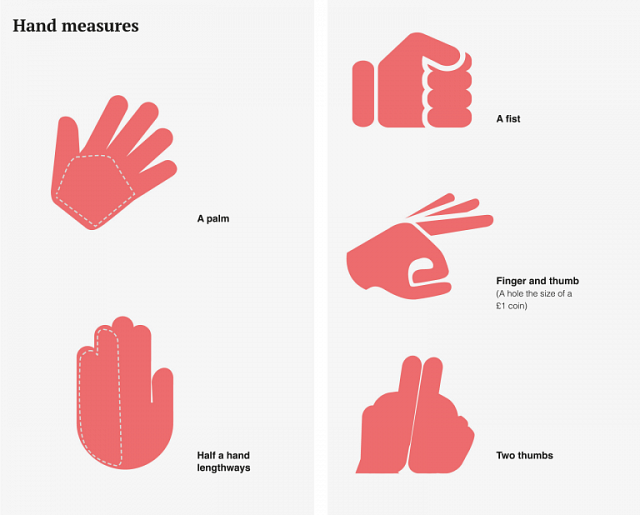
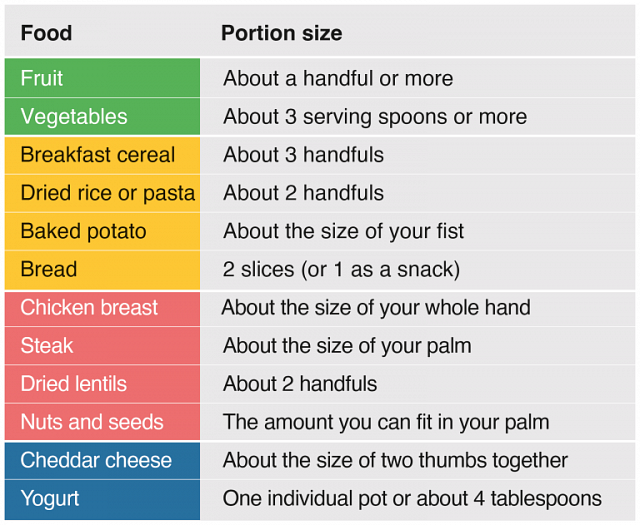
Note that ‘tablespoon’ refers to a 10ml spoon that would be used to eat soup or pudding, rather than a larger serving spoon.
Can I include treats?
Treat foods like cakes, biscuits, chocolate, crisps, pastries and sweets are typically high in saturated fat, sugars and/or salt and if we eat them too often and in large amounts, it is likely we will be having more calories than we need which can lead to weight gain! In fact, these foods are not needed as part of a healthy, balanced diet, so if you do eat them, then it’s best to keep portion sizes small – so they provide around 100-150 kcal – and eat them less often or alternatively swap to healthier options. You can look at the traffic light labels on the front of packs to go for those with fewer red traffic lights and more greens and ambers. Sugary drinks can also contribute a lot of sugar and calories, so it’s best to choose drinks that don’t contain added sugar.
If you’re looking for some healthier alternatives have a look at our suggestions below:
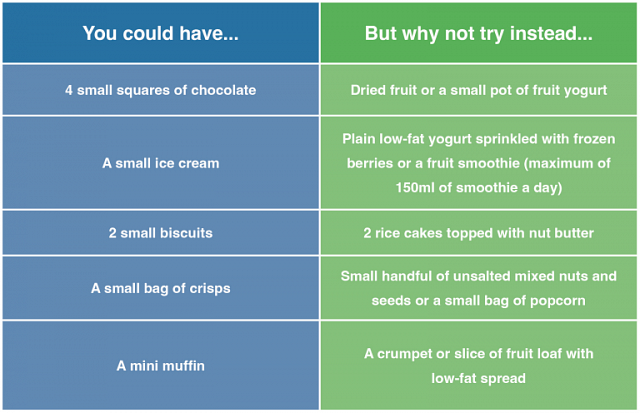
Where can I find out more?
I hope that you now feel more ‘portion size wise’ and equipped to practically measure out the right portion sizes for foods and snacks for you. To find out more about portion sizes, including how to use portion sizes when preparing and cooking some of your favourite meals, download the British Nutrition Foundation’s Get Portion Wise!
Guides from: https://www.nutrition.org.uk/putting-it-into-practice/balancing-the-diet/
Blog originally published for Making Sense of Sugar.
Notes to editors:
[1] 1 Hollands GJ, Shemilt I, Marteau TM, Jebb SA, Lewis HB, Wei Y, Higgins JPT, Ogilvie D. Portion, package or tableware size for changing selection and consumption of food, alcohol and tobacco. Cochrane Database of Systematic Reviews 2015, Issue 9. Art. No.: CD011045. DOI: 10.1002/14651858.CD011045.pub2 https://www.cochrane.org/CD011045/PUBHLTH_portion-package-or-tableware-size-changing-selection-and-consumption-food-alcohol-and-tobacco





